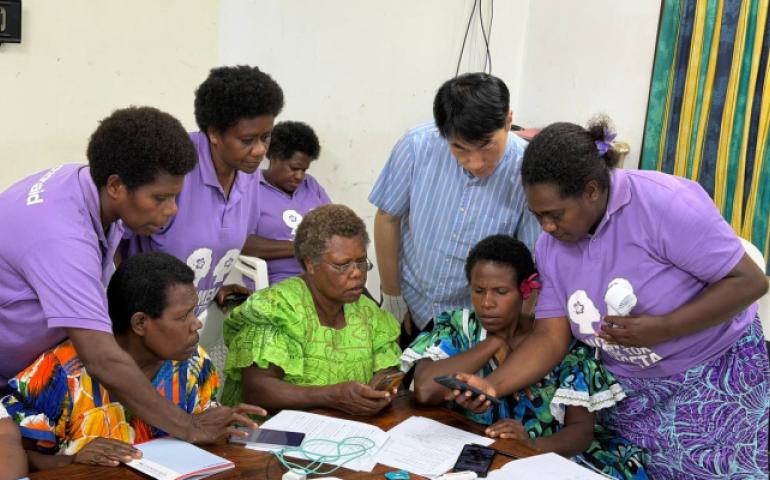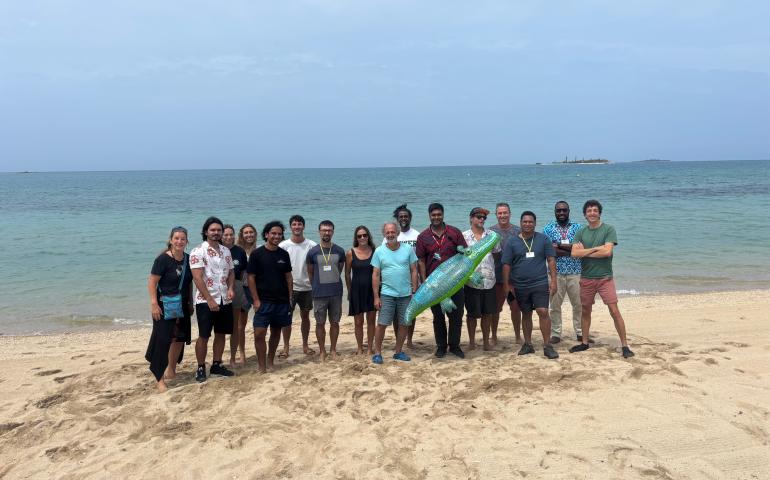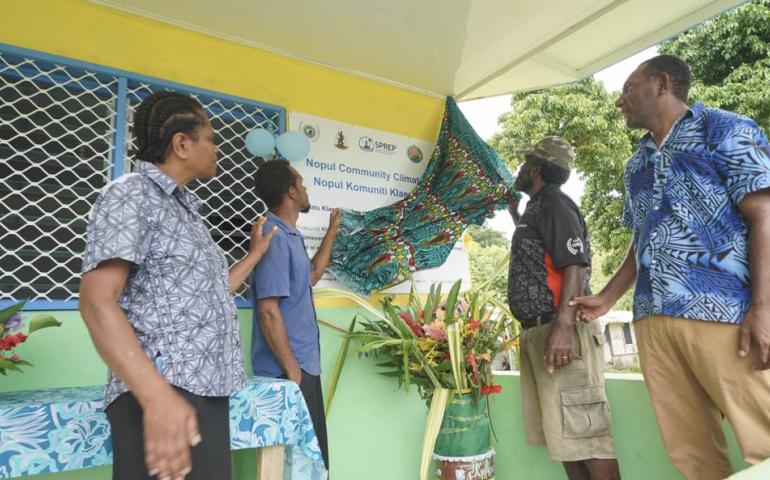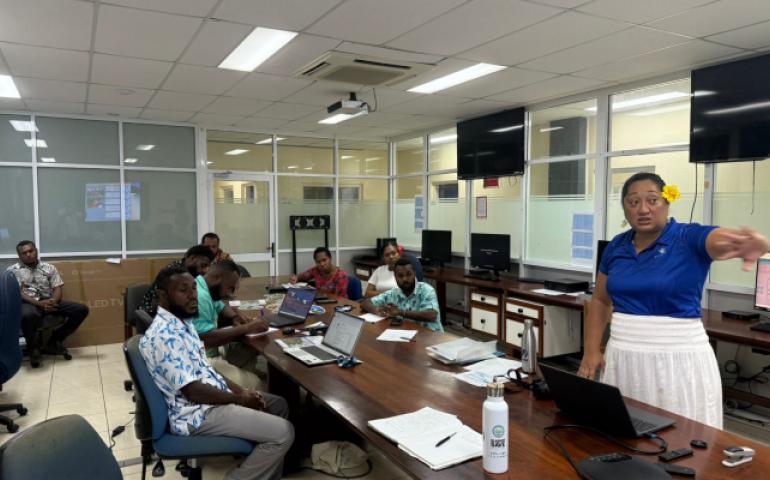PMC hears breakthrough in climate prediction modelling
By Samisoni Pareti of Islands Business Magazine & Bentaake Kiima of Broadcasting & Publications Authority (Kiribati)
16 August, 2017, Honiara, Solomon Islands, PMC-4 – A joint South Korean and Pacific Island project has announced the development of an advanced climate prediction system that climatologists predict would revolutionise seasonal climate forecast in our part of the world.
The model is called PICASO – short for Pacific Island Countries Advanced Seasonal Outlook - and it is expected to-be-made available to national meteorological services in the Pacific later this year.
A team from the APEC Climate Centre (APCC) in South Korea and the Secretariat of the Pacific Regional Environment Programme (SPREP) in Samoa has been working on the PICASO model for the last three years.
Explaining the genesis of the new forecasting system to heads of meteorological services in the Pacific at their biennial Pacific Meteorological Council meeting taking place in Honiara this week, PICASO project leader Dr Jim Ho YOO said the new prediction system makes use of APCC’s huge collection of prediction models.
APCC happens to be the largest collector of climate models in the world.
“The idea is very simple,” said Dr YOO. “There are many state of our climate models around the world available and we wanted to bring those data to the Pacific region, to make them available to the Pacific people then tailor those data to make them relevant to the individual countries.”
He said climate seasonal forecasting models from around the world are electronically sent by APCC every month to a server located at the SPREP headquarters in Samoa, where using the PICASO model, this information is translated and downscaled seasonal forecasts are then made available for each individual country or islands in the Pacific.
Dr YOO explained that PICASO seems to have overcome the deficiency in existing seasonal prediction models. This is particularly true when models attempt to work around the ambiguity that the El Nino weather phenomenon does to climate projection works.
There are some occasions or places where the El Nino impact is just not clear, and this is what PICASO attempts to address, added the South Korean scientist.
“Impressive and amazing work,” is how senior climatologist at the Australian Bureau of Meteorology (BoM) Agata Imielska described the PICASO model. She is one of four senior officials of BoM attending the PMS in Honiara.
Dr Andrew Tait, a climate scientist from New Zealand and Chairman of the Pacific Islands Climate Services Panel who is also a PMC delegate described the new seasonal forecasting tool as revolutionary.
“I think it’s one of the best systems that I have seen,” Dr Tait told the Pacific Media Team at the PMC. “I think it’s going to revolutionise the way we do things in weather forecasting in this region. It’s been very, very well done.
“A lot of work and resources have gone into it and my thanks to the government of South Korea, the APCC and its partner SPREP for their work. I really look forward to seeing it work across the Pacific.”
Thumbs up also came from the people who would use PICASO in their work in the Pacific. Samoa Meteorology Division Assistant CEO Mulipola Ausetalia Titimaea believes the new tool will be of great use to their line of work.
“There are about 41 models for specific regions but this one as has been alluded to will revolutionize our work because the one we have is three-monthly, but this PICASO model I understand will give us 6 monthly forecasts.”
Because of the longer timeframe offered by the PICASO forecast, head of the national met services in Tonga, ‘Ofa Fa’anunu said his country would use the seasonal forecast model to assist the kingdom’s agricultural sector.
He adds Solomon Islands would use it to plan its public health campaign against Malaria while Samoa intends to use PICASO for its climate early warning system.
“In the last few years, five years or so, each of the Pacific Island countries have benefitted from the assistance of the APCC. This system is new and we now are able to deliver seasonal predictions in our climate services. We still have to work on our sub-seasonal predictions, which is forecasting for the period of two weeks to a month.” – #PMC4 #PacificMet
The Fourth Pacific Meteorological Council is being held in Honiara, Solomon Islands from the 14 – 17 August co-hosted by the government of Solomon Islands, the Secretariat of the Pacific Regional Environment Programme (SPREP) and World Meteorological Organization (WMO). This will followed by the Second Pacific Meteorological Ministers Meeting (PMMM) on the 18 of August.
The PMC and PMMM is supported by the Government of Solomon Islands, SPREP, WMO, Government of Australia through the Climate and Oceans Support Programme (COSPPac) and Pacific Australia Climate Change Science and Adaptation Planning Programme (PACCSAP), Government of Finland, National Ocean and Atmospheric Administration (NOAA), United Nations Development Programme through the Resilience in the Pacific (SIDS) project.
The PMC consists of members of the Pacific National Meteorological and Hydrological Services supported by its technical partners, regional organisations, non-government organisations and private sectors.
This article was developed by a Pacific Media Team of Reporters currently providing coverage on the Fourth Pacific Meteorological Council in Solomon Islands. This activity coordinated by SPREP is supported by a partnership between the Government of Solomon Islands, SPREP, Australia funded project (Climate and Oceans Support Program (COSPPac) and UNDP Disaster for Pacific SIDS (RESPAC) project.
The views and opinions expressed in this article are those of the writer and do not necessarily reflect the views of the Secretariat of the Pacific Regional Environment Programme (SPREP) or the United Nations Development Programme (UNDP)both of which provided funding for generating media articles.
- Log in to post comments




